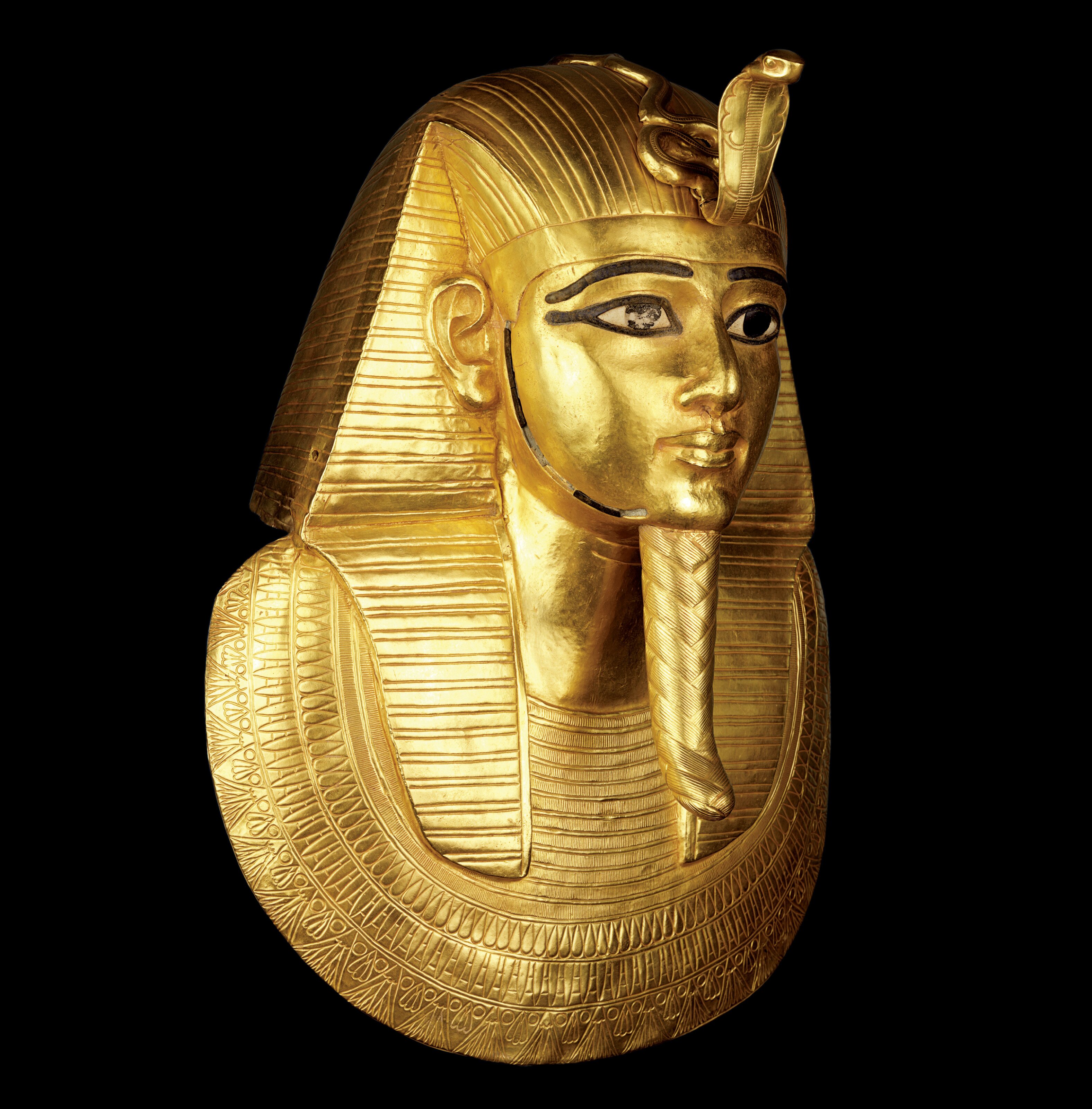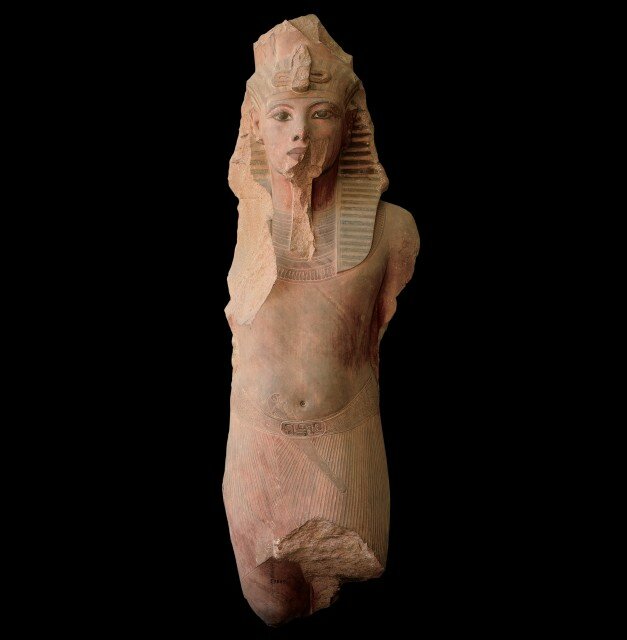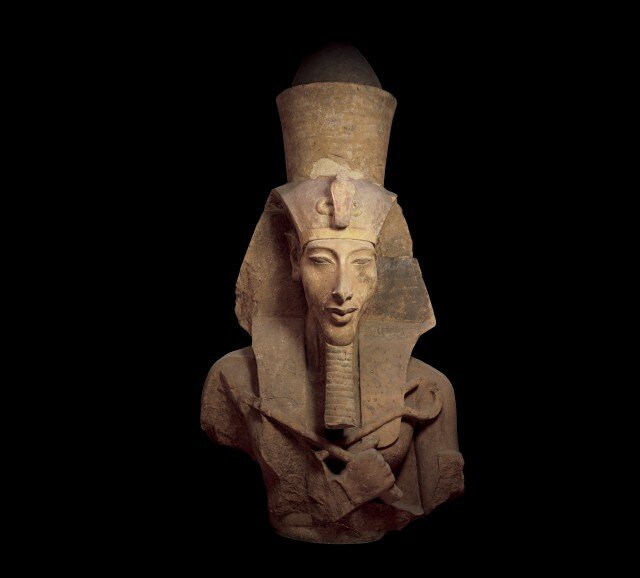A mere thirty-three hundred years ago, the young king Tutunkhamun was laid to rest in a concealed tomb together with everything he might need for his comfort in the afterlife. As with most other Egyptian royal tombs, it was looted later, but in his case, it was shortly after his burial, and the thieves left behind them about 5000 other items.
And then it was forgotten. Why? No one knows, except that he was a minor monarch who ruled only a short time, and his tomb was not in a usual location. Most royal tombs in The Valley of the Kings, a stark, hot wadi near Luxor, on the Nile, had openings up the sides of the rocky wadi walls. Tutankhamun’s was at the bottom. It remained undiscovered by canny tomb-robbers and excavating archeologists alike until a water boy stumbled on a step buried in the sand where archeologist Howard Carter was working in 1922.
Not all earlier 19th century excavators had understood how necessary it was to sketch (later photograph), document, and stabilize every detail of a tomb’s contents before moving anything. Carter did it right, treating each item with the care and reverence any 3300-year old object deserves. Everything eventually went to the Cairo Museum (though there are rumors Carter and his patron Lord Carnarvon pocketed some small items for
their own collections).
There have been many traveling exhibitions of the treasures from the tomb. The most recent until now in Seattle was the blockbuster The Treasures of Tutunkhamun in 1978. Now they are back again on the final leg of a tour said to be the last time these wonderful items will leave Egypt. The National Geographic exhibition, titled Tutankhamun: The Golden King and the Great Pharaohs, opened at the Pacific Science Center yesterday, where it will run through January 6, 2013.
And what an exhibition it is! Ten rooms of items, beautifully displayed with ample space to walk around them and see the backs and sides, include six rooms of material from other tombs. Carved statues of dignified pharaohs, priests, and others in calcite alabaster or granite from as much as 4500 years ago leave one marveling at the skill of the sculptors. How did they carve such detailed characterful faces with the tools they had available?
Another room has artifacts showing a more homely existence, a sketch of a woman eating a duck, the sarcophagus of a beloved cat, a couple of statues showing young princesses held tenderly on the knee of an upper servant, even a toilet seat! A wooden box on legs with turquoise faience inlay would have any modern woodworker recognizing the techniques used to make it. They are the same today. There is jewelry: necklaces, an earring, pectorals, breastplates, all in gold with semi-precious stones like carnelian or lapis lazuli.
Finally you come to Tutankhamen’s artifacts, shown in four rooms, corresponding to the rooms in the tomb. Here you see a wooden bed with woven reed matting almost intact, and you see that the way the reeds are inserted into the wood frame are the same as on any cane-seated chair today. The bed however is curved concave top to bottom—surely very uncomfortable? There are many little statues of servants, called shabtis, which were included by the dozens in royal tombs to act as servants for the ruler’s every care after death. A detailed ship model, over four feet long, a tiny checkered game box with its pieces in a drawer, an exquisite inlaid tiny gold coffin, or coffinette, one of four which contained Tutunkhamun’s vital organs, even gold finger stalls placed over his digits, pectorals and plenty more are each shown to their best advantage. And of course, lots of gold.
All in all there are 149 items, not so many you will get indigestion trying to take them in, but so well displayed and lit that you will want to give yourself enough time to enjoy them at leisure. To help, there are many short videos and an audio guide ($6) narrated by Harrison Ford with commentary by a distinguished Egyptian archeologist Zahi Hawass, whose voice betrays his excitement at some of the discoveries he has made. For those who want more, there are two IMAX films. On the way out, through the gift shop, there’s a full scale model of Tutankhamun’s mummified corpse and another video of the successful effort through DNA matching to identify who was the king’s father.
It’s a superb exhibition. Leave yourself an entire morning or afternoon to enjoy it. Bring the kids, they are not likely to have the chance again without a visit to Egypt. At the press conference preceding the press viewing, among other dignitaries who came together to make this exhibition possible was Dr. Mohamed Ibrahim Aly Sayed, Egypt’s Minister of Antiquities who came with a delegation. He spoke about the exhibition, but followed it with a heartfelt plea for us to visit Egypt in support of its current earthshaking transition to democracy, assuring us that the country is safe.








